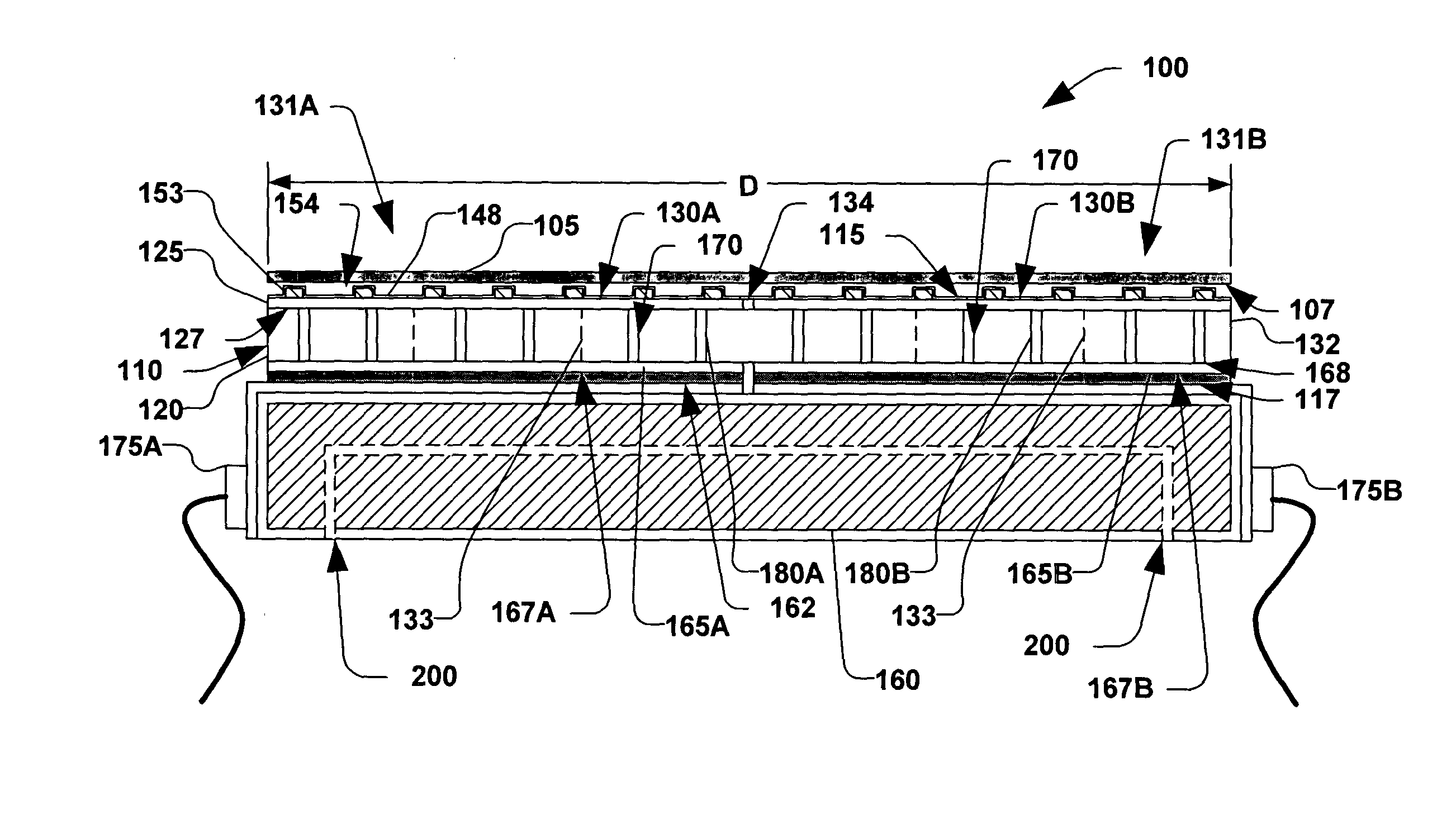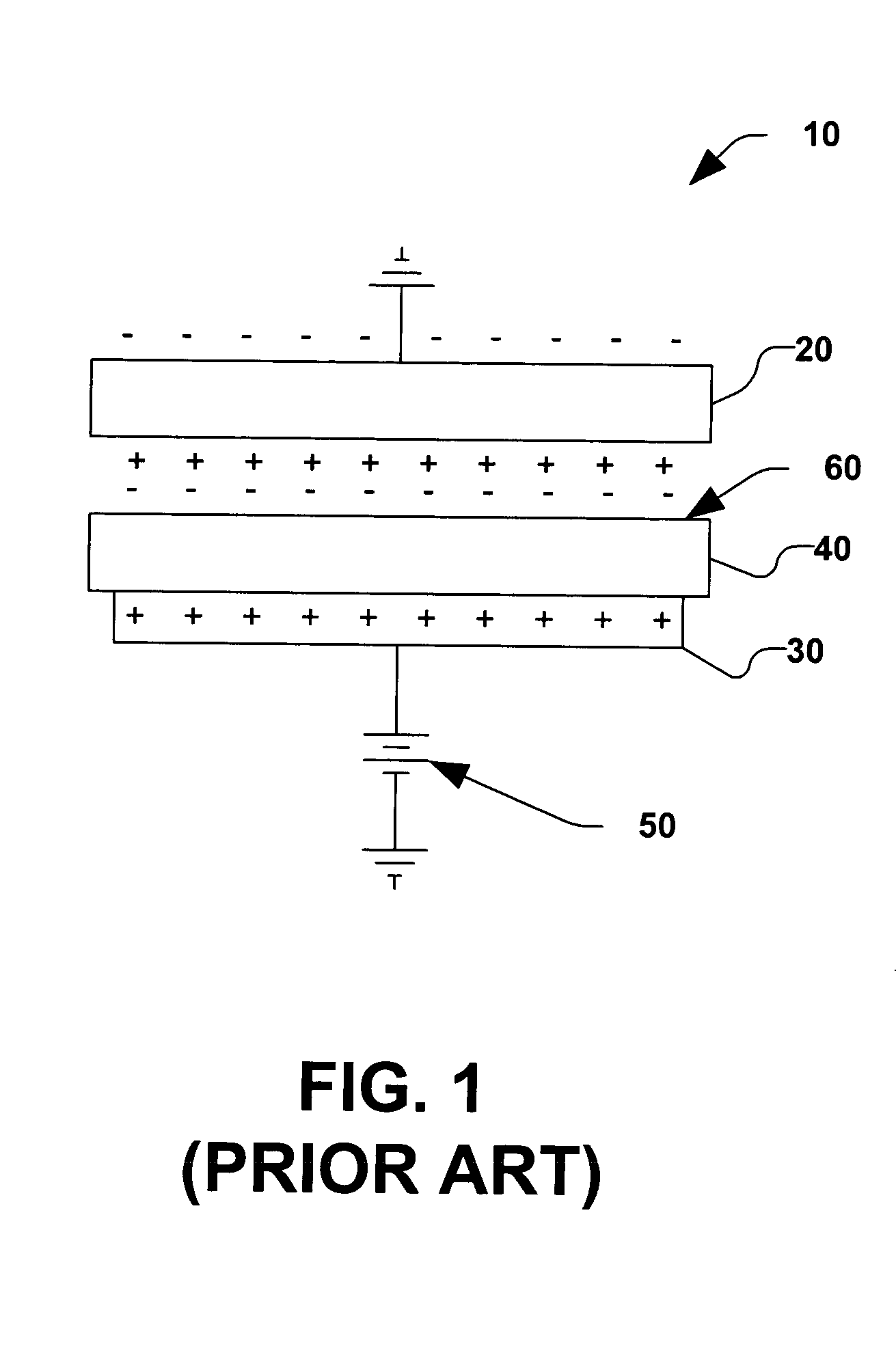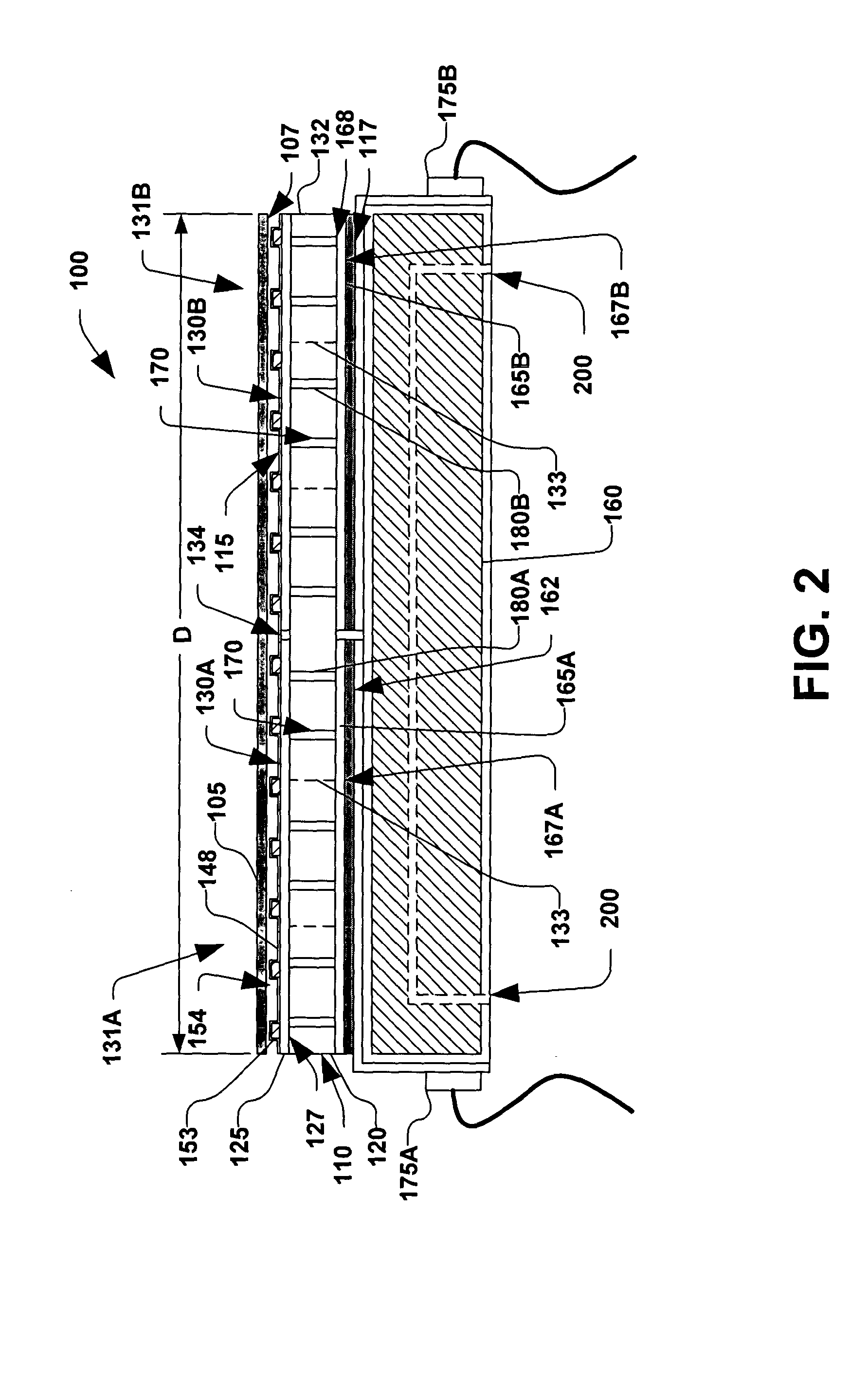Mems based multi-polar electrostatic chuck
a multi-polar electrostatic chuck and magnet technology, applied in electrostatic charges, emergency protective circuit arrangements, capacitors, etc., can solve the problems of costly power supply and consumption considerations, deleterious effects on the wafer, and reduce the cost of power supply and consumption, so as to improve process control, efficient clamp the substrate, and fast response time
- Summary
- Abstract
- Description
- Claims
- Application Information
AI Technical Summary
Benefits of technology
Problems solved by technology
Method used
Image
Examples
Embodiment Construction
[0038] The present invention is directed towards a multi-polar electrostatic chuck (ESC) and an associated system and method that incorporates several inventive features thereof. In particular, the electrostatic chuck of the present invention increases an ability to rapidly and uniformly cool or heat a wafer substrate, for example, during an ion implantation process. Accordingly, the present invention will now be described with reference to the drawings, wherein like reference numerals are used to refer to like elements throughout. It should be understood that the description of these aspects are merely illustrative and that they should not be taken in a limiting sense. In the following description, for purposes of explanation, numerous specific details are set forth in order to provide a thorough understanding of the present invention. It will be evident to one skilled in the art, however, that the present invention may be practiced without these specific details.
[0039] The presen...
PUM
 Login to View More
Login to View More Abstract
Description
Claims
Application Information
 Login to View More
Login to View More - R&D
- Intellectual Property
- Life Sciences
- Materials
- Tech Scout
- Unparalleled Data Quality
- Higher Quality Content
- 60% Fewer Hallucinations
Browse by: Latest US Patents, China's latest patents, Technical Efficacy Thesaurus, Application Domain, Technology Topic, Popular Technical Reports.
© 2025 PatSnap. All rights reserved.Legal|Privacy policy|Modern Slavery Act Transparency Statement|Sitemap|About US| Contact US: help@patsnap.com



